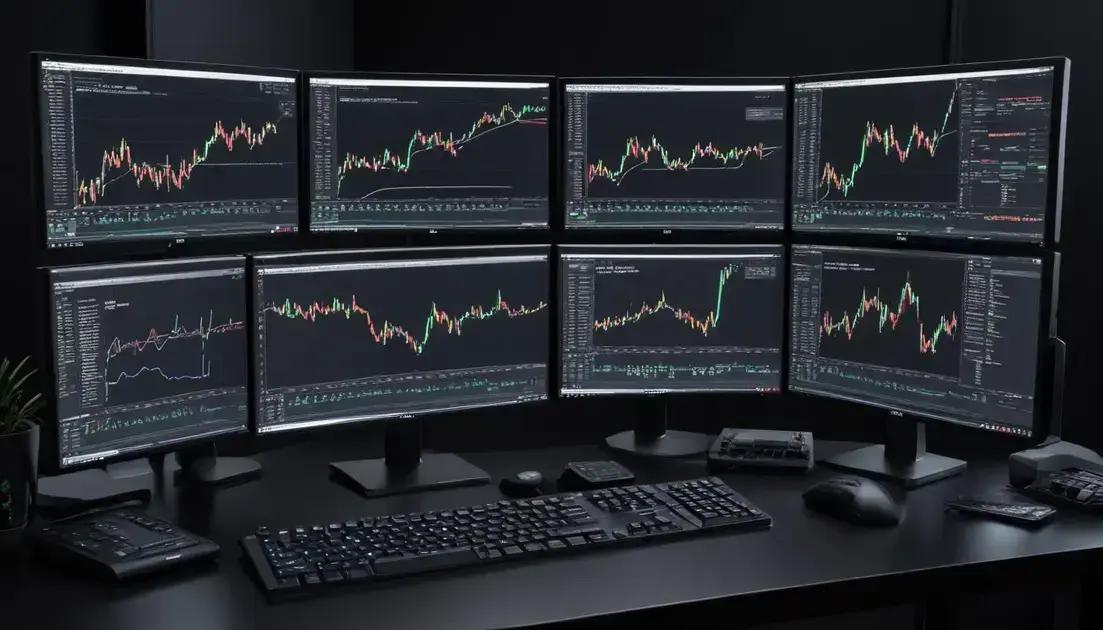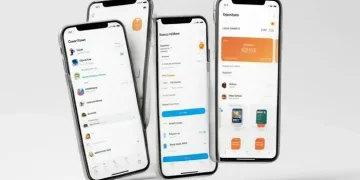Trader platform: how to choose the best one for your investments

Choosing the right trader platform can make or break your investment journey. Whether you’re a beginner or a seasoned trader, the platform you use impacts everything from execution speed to security. Let’s dive into what makes a great trader platform and how to find the perfect fit for your needs.
What is a trader platform and why it matters
A trader platform is a software application that allows investors to buy, sell, and manage financial assets like stocks, forex, or cryptocurrencies. It serves as your gateway to the markets, providing tools for analysis, execution, and portfolio tracking. Choosing the right platform can significantly impact your trading success.
Why a Trader Platform Matters
Without a reliable platform, even the best trading strategies can fail. A good trader platform ensures fast order execution, real-time data, and security—key factors that influence profitability. Poor platform performance can lead to missed opportunities or even financial losses.
Key Functions of a Trader Platform
Most platforms offer features like charting tools, technical indicators, and risk management options. Some even include AI-driven analytics to help traders make informed decisions. The best platforms balance usability with advanced functionality.
For beginners, a user-friendly interface is crucial, while experienced traders may prioritize customization and automation. Many platforms now offer mobile trading, allowing users to manage investments anytime, anywhere.
How to Evaluate a Trader Platform
Look for low latency, strong security measures, and regulatory compliance. Also, consider fees, customer support, and available asset classes. A demo account can help test the platform before committing real funds.
Ultimately, the right trader platform aligns with your strategy, experience level, and financial goals. Taking the time to research and compare options can make all the difference in your trading journey.
Key features to look for in a trader platform
When choosing a trader platform, certain features can make or break your trading experience. The right combination of tools and functionality helps you execute strategies efficiently while minimizing risks.
Execution Speed and Reliability
Look for platforms with low latency execution to ensure your orders are filled at the best available prices. Platform downtime during volatile markets can cost you money, so reliability is non-negotiable.
Charting and Technical Analysis Tools
Quality platforms offer advanced charting packages with multiple timeframes, drawing tools, and indicators. The ability to customize charts and save templates saves time when analyzing multiple assets.
Some platforms now include AI-powered pattern recognition that can alert you to potential trading opportunities you might otherwise miss.
Order Types and Risk Management
Beyond basic market and limit orders, look for platforms supporting:
- Stop-loss and take-profit orders
- Trailing stops
- OCO (One-Cancels-the-Other) orders
- Conditional orders based on technical indicators
Security Features
With cyber threats increasing, prioritize platforms offering:
- Two-factor authentication
- Encrypted data transmission
- Withdrawal confirmation protocols
- Cold storage for crypto assets
The best platforms balance powerful features with intuitive design. Test potential platforms with demo accounts to ensure the interface matches your workflow before committing real capital.
Comparing top trader platforms in 2023
2023 has seen intense competition among trader platforms, each offering unique advantages for different trading styles. Here’s how the top contenders stack up against each other in key performance areas.
Platforms for Beginners vs. Advanced Traders
Platforms like eToro and Robinhood dominate the beginner-friendly space with simple interfaces and social trading features. Meanwhile, MetaTrader 5 and ThinkorSwim cater to advanced traders with sophisticated charting and algorithmic trading capabilities.
Fee Structures Compared
Commission-free platforms have become standard, but hidden costs vary significantly:
- Webull: No commissions but wider spreads
- Interactive Brokers: Low commissions but high volume discounts
- Binance: Maker-taker fee model with discounts for BNB holders
Asset Class Availability
While most platforms offer stocks and ETFs, differentiation comes in niche offerings:
- TD Ameritrade: Strong options trading tools
- Kraken: Extensive cryptocurrency selection
- Saxo Bank: Global market access including bonds and futures
Mobile Experience Showdown
Platforms like TradeStation offer full desktop functionality on mobile, while Revolut focuses on simplified investing with fractional shares. Battery drain and data usage vary significantly between apps.
When choosing between platforms, consider your primary trading style, preferred assets, and whether you prioritize low costs over advanced features. Most platforms offer demo accounts – the best way to test which fits your workflow before committing funds.
How to set up your trader platform account
Setting up your trader platform account correctly from the start prevents headaches later. Follow these steps to ensure your trading foundation is solid and secure.
Registration Process
Most platforms require:
- Email verification
- Phone number confirmation
- Basic personal information
- Agreement to terms of service
Pro tip: Use a dedicated email just for trading to keep communications organized and secure.
Identity Verification (KYC)
Expect to provide:
- Government-issued ID (passport or driver’s license)
- Proof of address (utility bill or bank statement)
- Sometimes a live selfie for facial recognition
This process can take from minutes to several business days depending on the platform and verification queue.
Security Setup
Before depositing funds:
- Enable two-factor authentication (2FA)
- Set up withdrawal whitelist if available
- Create strong, unique password
- Review notification settings
Funding Your Account
Payment methods vary by platform:
- Bank transfers (slowest but lowest fees)
- Credit/debit cards (instant but higher fees)
- Cryptocurrency deposits (varies by exchange)
- E-wallets like PayPal or Skrill
Consider starting with a small test deposit to verify everything works before transferring larger amounts.
Once set up, explore the platform’s demo or paper trading feature if available. This lets you practice without risking real money while you learn the interface.
Understanding fees and costs on trader platforms

Hidden fees can eat into your trading profits if you’re not careful. Understanding the fee structure of your trader platform is as important as knowing how to trade.
Common Types of Trading Fees
Most platforms charge some combination of:
- Commission fees per trade (common for stocks)
- Spread costs (difference between buy/sell prices)
- Overnight financing fees for positions held past market close
- Inactivity fees if you don’t trade frequently enough
How Fees Vary by Asset Class
Different investments have different cost structures:
- Stocks/ETFs: Often commission-free but may have regulatory fees
- Forex: Typically built into the spread
- Crypto: Usually percentage-based trading fees
- Options: Per-contract fees plus base commission
Ways to Reduce Trading Costs
Smart traders use these strategies:
- Look for volume discounts (lower fees for active traders)
- Use limit orders instead of market orders when possible
- Consider bundled pricing plans if trading frequently
- Watch for promotional offers like free trades for new accounts
Always check the platform’s fee schedule before opening an account. What appears to be a ‘free’ platform might make money through wider spreads or order flow payments. Calculating your estimated costs based on your trading style helps compare platforms accurately.
Security measures every trader platform should have
Your trader platform’s security features are the first line of defense against cyber threats and financial fraud. Never compromise on these essential protections.
Mandatory Security Features
Any reputable platform must offer:
- Two-factor authentication (2FA) via app or hardware token
- End-to-end encryption for all data transmissions
- Withdrawal address whitelisting to prevent fund diversion
- Session timeouts after periods of inactivity
Advanced Protection Measures
Look for platforms that go beyond basics with:
- Biometric login (fingerprint or facial recognition)
- Device authorization for new login attempts
- Cold storage for cryptocurrency assets
- Real-time transaction monitoring for suspicious activity
User Security Responsibilities
Even the most secure platform requires user vigilance:
- Never share login credentials or 2FA codes
- Use a dedicated email for trading accounts
- Enable login notifications for all access attempts
- Regularly review connected devices and active sessions
Before depositing funds, research the platform’s security history. Check for past breaches and how they were handled. Remember – if a platform’s security seems too good to be true, it probably is. Your money’s safety depends on both the platform’s protections and your security habits.
Mobile vs. desktop: which trader platform suits you
Choosing between mobile and desktop trading platforms depends on your trading style, lifestyle, and technical needs. Each option offers distinct advantages for different types of traders.
When Mobile Trading Excels
Smartphone platforms shine for:
- On-the-go monitoring of open positions
- Quick trades during market-moving news events
- Basic chart analysis with simplified interfaces
- Setting price alerts and notifications
Top mobile apps now offer nearly full functionality with intuitive touch controls optimized for smaller screens.
Desktop Platform Advantages
Traditional platforms provide:
- Multi-screen setups for advanced charting
- Faster execution with keyboard shortcuts
- More technical indicators and drawing tools
- Better performance for algorithmic trading
Hybrid Approach Benefits
Many successful traders use both:
- Desktop for research and analysis
- Mobile for monitoring and quick adjustments
- Tablets as a middle-ground solution
Consider your typical trading environment – if you’re often away from your desk, mobile accessibility becomes crucial. But for complex strategies requiring multiple charts, desktop remains superior. Most platforms now sync seamlessly across devices, letting you switch as needed.
Integrating tools and APIs with your trader platform
Modern trader platforms become infinitely more powerful when integrated with external tools and APIs. These connections can transform a basic trading interface into a professional-grade workstation.
Essential API Integrations
Most platforms support connections with:
- Market data providers for enhanced analytics
- News feeds with sentiment analysis
- Risk management systems for automated protection
- Portfolio trackers for consolidated reporting
Automation Possibilities
API access enables:
- Custom algorithmic trading strategies
- Automated trade execution based on indicators
- Smart order routing between exchanges
- Real-time position monitoring alerts
Popular Third-Party Tools
Traders frequently integrate:
- TradingView for advanced charting
- Zapier for workflow automation
- Excel/Google Sheets for custom analytics
- Python/R for quantitative analysis
Before integrating any tool, verify its security protocols and review the platform’s API documentation. Start with read-only connections when testing new integrations, and always monitor automated systems – technology can fail when you least expect it.
Common mistakes to avoid when choosing a trader platform
Selecting the wrong trader platform can cost you time, money, and missed opportunities. Avoid these common pitfalls that many traders encounter when choosing their trading software.
Overlooking Hidden Costs
Many traders focus only on:
- Commission-free claims
- Advertised spreads
While ignoring:
- Inactivity fees
- Withdrawal charges
- Currency conversion costs
Prioritizing Features Over Reliability
Flashy tools mean nothing if:
- The platform crashes during volatility
- Orders execute slowly
- Customer support is unresponsive
Ignoring Your Trading Style
Day traders need:
- Advanced charting
- Fast execution
Long-term investors should prioritize:
- Research tools
- Portfolio analytics
Security Complacency
Dangerous assumptions include:
- ‘Big name’ means perfect security
- Mobile apps are equally secure as desktop
- All two-factor authentication methods are equal
Test potential platforms with small amounts first. Read independent reviews, not just testimonials. And remember – the most expensive platform isn’t necessarily the best for your specific needs.
Tips to optimize your experience on a trader platform

Mastering your trader platform can significantly improve your trading performance. These professional tips will help you get the most from your trading software.
Customize Your Workspace
Boost efficiency by:
- Arranging charts in logical groups
- Setting up custom watchlists
- Creating template layouts for different strategies
- Programming hotkeys for frequent actions
Leverage Platform-Specific Features
Many traders overlook powerful built-in tools like:
- Backtesting capabilities
- Risk-reward calculators
- Trade journal integrations
- Market scanner filters
Optimize Performance Settings
Adjust these for smoother operation:
- Data refresh rates
- Chart resolution
- News feed filters
- Notification preferences
Continuous Learning Approach
Stay updated by:
- Completing platform tutorials
- Joining user communities
- Experimenting with demo accounts
- Reviewing platform update logs
Remember that platform mastery is an ongoing process. Schedule regular reviews of your setup, and don’t hesitate to reset preferences as your trading style evolves. The few hours spent optimizing your platform can save countless hours in execution delays and missed opportunities.
Choosing Your Ideal Trading Platform
Selecting the right trader platform is one of the most important decisions you’ll make as an investor. Throughout this guide, we’ve explored key considerations – from essential features and security measures to mobile accessibility and cost structures.
Remember that the best platform for you depends on your unique trading style, experience level, and financial goals. While advanced tools are impressive, reliability and ease-of-use often matter more for consistent success.
Take advantage of demo accounts to test platforms before committing real funds. Stay updated on new features as trading technology evolves rapidly. Most importantly, view your platform as a dynamic tool that should grow with your skills – don’t hesitate to reevaluate your choice as your needs change.
With the right platform supporting your strategy, you’re better positioned to navigate the markets confidently and efficiently.






